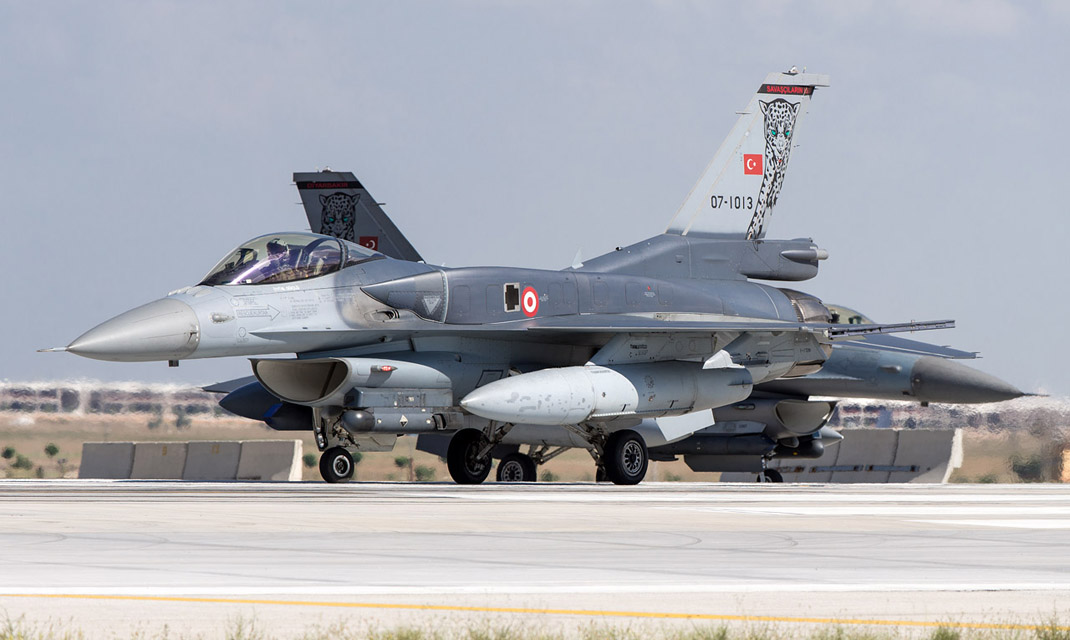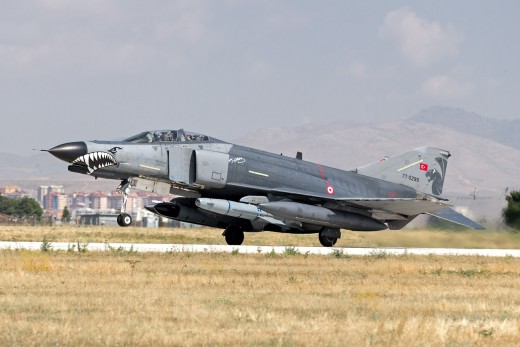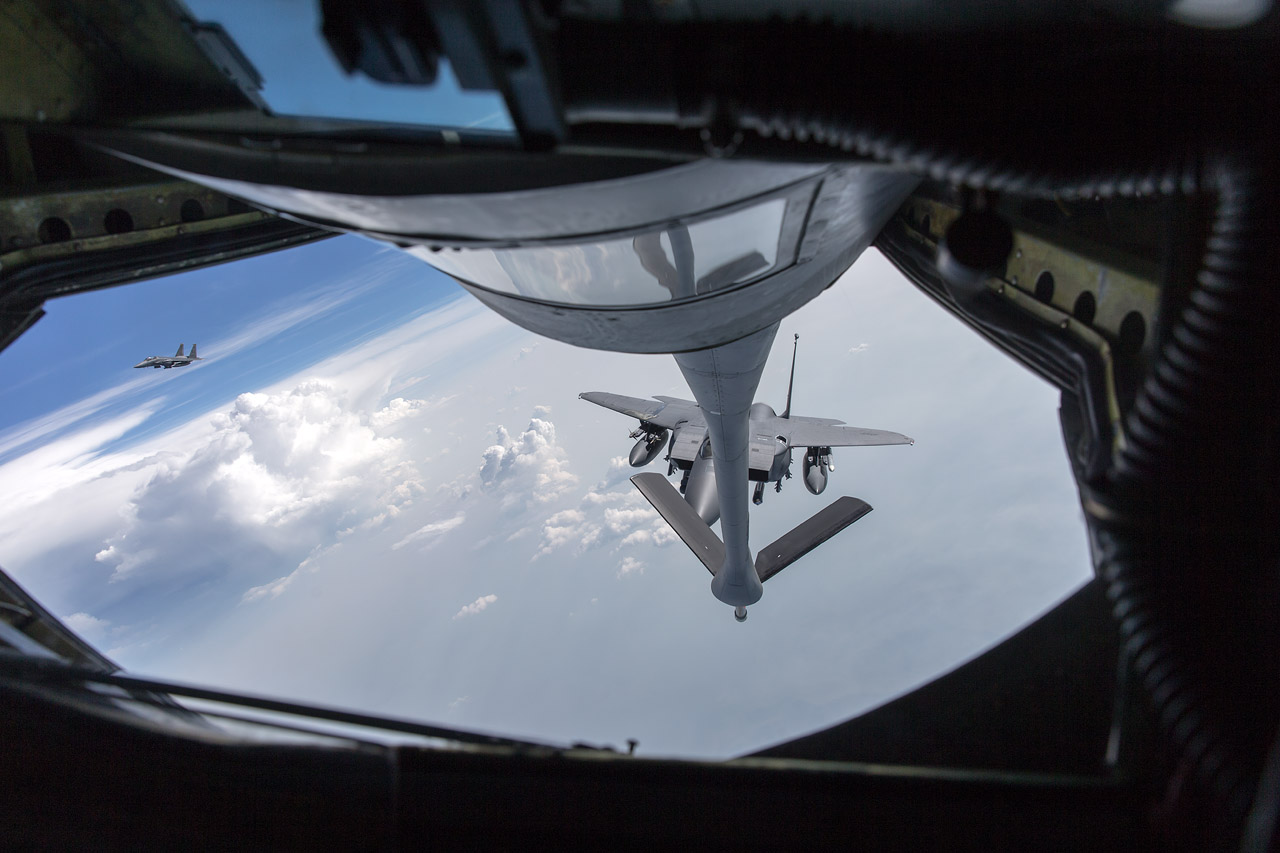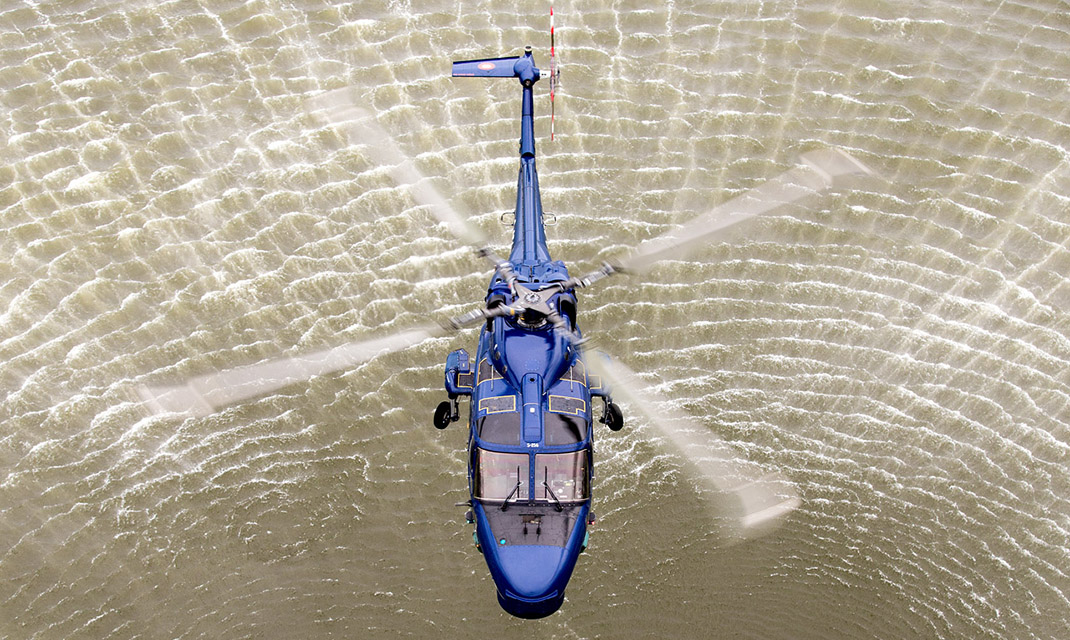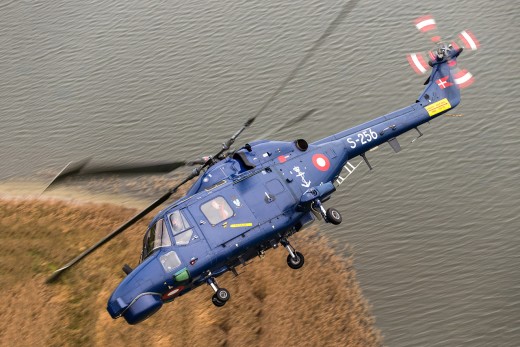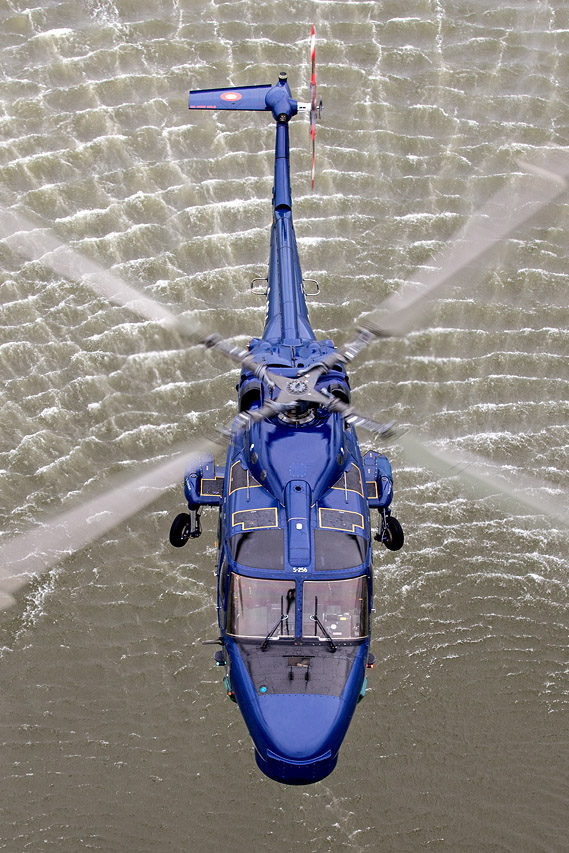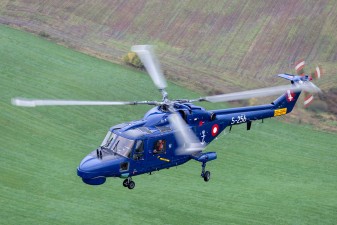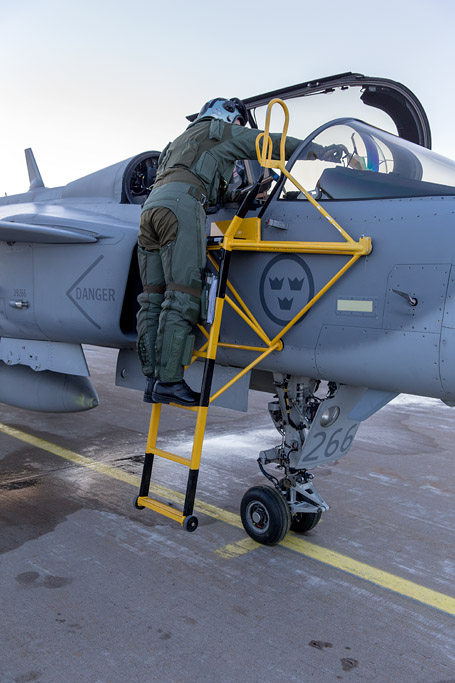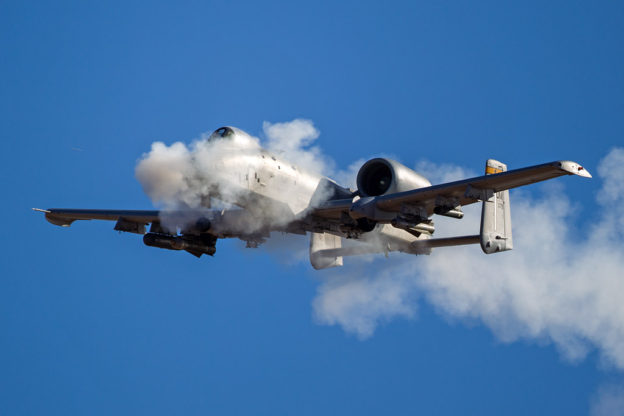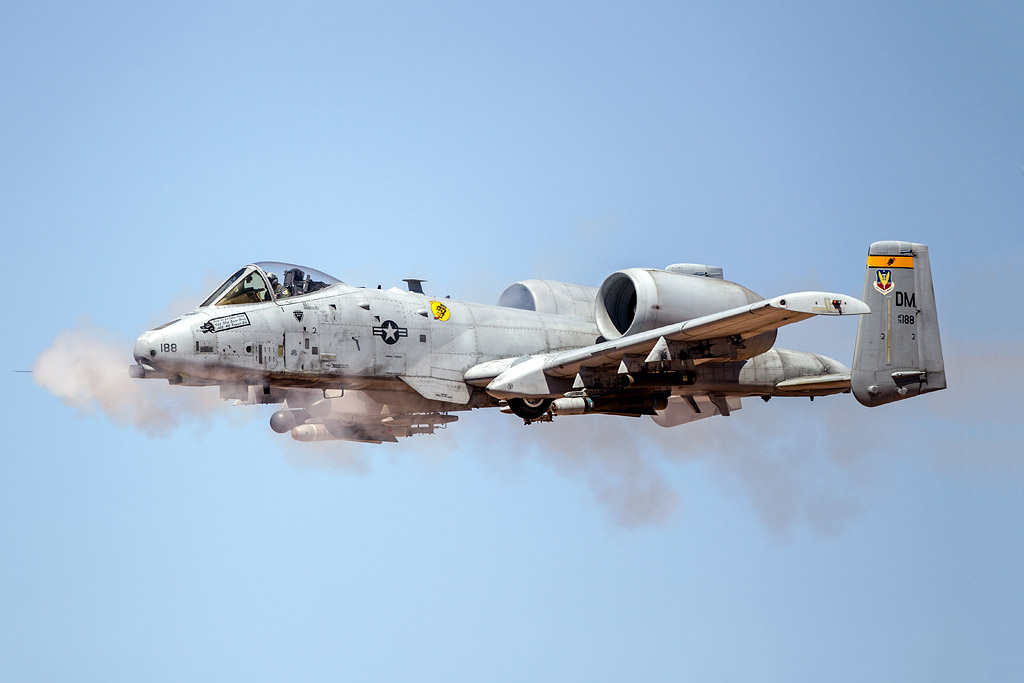Den første del i denne mini-artikel serie, som handler om de nordiske fighters. Den første del handler om det svenske luftvåben.
F17 Kallinge blev etableret oven på Bredåkra mosen ved Kallinge under navnet Kungliga Blekinge Flygflottilj d. 1 Juli 1944. 2 eskadriller, kendt som 171. stridsflygdivisonen, og 172. stridsflygdivisionen i dag, blev samtidig dannet under F17. Eskadrillernes
primære opgave var at samarbejde med flåden i anti-skibs missioner. Dette passede fint til placeringen, som blev valgt da det tidligere havde været et militært område, dog kun brugt af flåden.
Eskadrillerne startede med at flyve B 3 (Junkers Ju 86D-1). I 1947 gik de over til at flyve marine versionen af flyet Saab 18. I 1960′erne blev der tilføjet to nye eskadriller til F17. I 1964 ankom division RB 68 (Bloodhound
MK II, anti luft missil batteri), og i 1965 en Search and Rescue (SAR) helikopter eskadrille. Anti luft missil batteri eskadrillen var kun aktiv indtil 1974, da hele systemet i flyvevåbnet blev udfaset og blev sendt tilbage til Storbritannien.
I forbindelse med nedlukningen af ?F3 Malmslätt i 1972, blev der i 1973 tilføjet to jagt divisioner fra F3 til F17. Enhederne blev lavet om til at være dedikerede jagt eskadriller indtil 1978, hvor en jagt division blev udfaset og
erstattet med en rekognoscerings division fra F11 Nyköping, som efterfølgende blev udfaset i 1980, efter forsvarsforliget af 1977. Spaningsdivisionen var den første på F17, der fløj med den bevæbnet udgave af Viggen, i form af SF/SH
Viggen.
F12 Kalmar var også en af de flyvestationer, som Riksdagen besluttede at lukke i 1980, efter forliget i 1977. F12 havde et sektorspecifik ansvar over sektor S2, som dækkede den sydøstlige del af Sverige, og luftforsvar centret kaldet
Vargen (Ulven), dette ansvar blev overført til F17. I 1978 overtog F10 Ängelholm hele SektorSyd, hvilket betød at de overtog al luft overvågning af det sydlige Sverige. Hos F12 Kalmar lå flyvevåbnets vejr skole (VädS) placeret, denne
enhed indgik i F17, som et detachement under betegnelsen F17K, frem til 1982, hvor skolen blev flyttet til F5 Ljungbyhed og alle militære aktiviteter i det tidligere F12 ophørte og afsluttet.

Tooled up, og klar til kamp. JAS-39 er et meget alsidig kampfly.
|
Det er ikke kun missioner, hvor det handler om “fire-power”, som JAS-39 kan bruges i.
En anden vigtig rolle er blandt andet rekognoscering.
I 1982 blev flyvestationens jagt divisioner, bevæbnet med JA 37 Viggen. Efter forsvarsforliget i 1992, skulle F13 Norrköping i løbet af 1993 overføre en jagt / angreb division fra F13 Norrköping til F17, mens der også blev sendt en rekognoscering division
til F10 i Ängelholm.
I forbindelse med forsvarsforliget af 2000, skulle F10 i Ängelholm lukkes den 31. december 2002. I forbindelse med forliget, blev det besluttet at F17 skulle overtage JAS 39A Gripen fra F10 i Ängelholm og dets detachement i Hästveda
(F10H). Det samme forsvarsforlig besluttede også at F16 Uppsala skulle lukkes, hvilket inkluderede de to F16 afdelinger: F16 Malmen på Malmens lufthavn (F16M) og F16 Gotland i Visby lufthavn. Disse afdelinger blev overført til
F17 under betegnelserne henholdsvis F17M og F17G.
I 2004 begyndte eskadrillerne at få erstattet deres JAS-39A version med C-versionen. I forbindelse med forsvarsforliget i 2004 blev Flygbasjägarskolan (FBJS) overført fra F7 Såtenäs til flyvestationen. Endvidere ankom den tredje
helikopter eskadrille (3. hkpskv), til F17. Den tredje helikopter eskadrille er kun co-lokaliseret på flyvestationen, og er et detachement til Försvarsmaktens helikopterflottilj (Hkpflj), på Malmen.
2011 var også året hvor F17 blev sendt til Libyen i forbindelse med FL01 (Flyginsats Libyen), som var den første internationale fly mission siden F22 Congo (22 U.N. Fighter Squadron, 1961-1963). 2011 blev også det sidste år eskadrillen
fløj A-versionen af JAS 39 Gripen, da 172. stridsflygdivisionen blev opgraderet i juni måned til C-version.
|
|
|
F17 Gotland (F17G ) har siden 2003 været en afdeling af F17 baseret på Gotland. Afdelingen blev oprettet som en detachment af F13 Norrköping i 1956, ved Visby Airport på Gotland, navngivet F13 Gotland (F13G ) med henblik på at støtte Flygvapnets faciliteter
på øen. Samme år blev der bygget en ny start og landingsbane i asfalt. I 1957 blev F13 Norrköping tildelt ansvaret for Gotlands luftförsvarssektor (G 1). Sektoren kom i 1965 til at blive kombineret med F13s anden sektor O 1. I 1981
blev sektor O 1 og O 5 lagt sammen til en ny sektor, Sector Mitt, der dækkede hele mellem Sverige. Sektoren ledes af F16 Uppsala.
Flyvestationen kom først til senere, og i flere omgange. Den skulle tilpasses til forskellige formål, 1965 til Bas 60 , i 1975 til JA 37 Viggen, i 1992 til Bas 90, og i 1995 til transportfly.
I forbindelse med den store lukning af flyvestationer, der fandt sted i 1990′erne og begyndelsen af 2000′erne, kom detachementets vigtigste ændring i løbet af flere etaper. I 1994, da F13 Norrköping blev lukket som en
konsekvens af forsvarsforliget af 1992, blev detachementen overført til F16 Uppsala, og blev udpeget F16 Gotland (F16G).
Da F16 Uppsala blev lukket i 2003 på grund af forsvarsforliget af 2000, blev detachementet overført til F17 Kallinge og fik sit nuværende navn F17 Gotland (F17G). QRA – Quick Reaction Alert, kaldet afvisningsberedskabet (AVB)
i Danmark, er en af de vigtigste roller for F17G i dag, da Gotland ligger midt i Østersøen, og det er derfor et af de mest østligste luftrum i Sverige.

En våd bane, et flot eftermiddagslys, og en JAS-39C der bremser i flotte omgivelser.
JAS-39C’s canards fungerer som effektive bremser.
|
“I forbindelse med forsvarforliget af 2000, skulle F10 i Ängelholm lukkes den 31. december 2002”

Gruppechef for 172:a Stridsflygdivisionen Capt. Mattias ”Shooter” Olin,
står foran sin jet inden næste trænings mission skal til at starte.
|
|
|
Døgnet rundt, hver dag, hele året, er der et QRA beredskab på standby, klar til at beskytte Sverige territoriale integritet.
Baggrunden for det svenske beredskab er Sovjetunionens nedskydning af en svensk DC-3 over Østersøen i 1952, som blev efterfulgt af den såkaldte Catalina nedskydning, da en Catalina der ledte efter DC-3 også blev skudt ned af Sovjetunionen.
Konsekvensen af disse begivenheder var, at Sverige indførte en kontinuerlig overvågning af luftrummet samt et beredskab, der kan fungere mod eventuelle krænkelser af luftrummet.
I dag har Försvarsmakten altid fightere i beredskabet. Det betyder ikke, at der er fightere i luften døgnet rundt – noget, der ville være ekstremt dyrt og personalekrævende (-intensitivt). I stedet indgår en vurdering af situationen,
som er grundlaget for om kampflyet skal i luften, eller forblive på jorden i forskellige grader af standby.

Sverige har hele tiden flyvere klar til beskytte deres territorium.
|
Den hurtigste måde at afvise en ubuden gæst på, enten på himlen eller på havoverfladen, er at sende Försvarsmaktens fightere i luften. Sveriges land, hav og luftrum overvåges af forskellige sensorer, såsom radarstationer fra forskellige steder døgnet
rundt. Ved den mindste antydning af, at de ukendte fly eller skibes aktiviteter forekommer på eller nær det svenske territorium, vil interceptors blive scrambled, for at kontrollere hvad der sker, og gøre opmærksom på at de trodser
svensk territorium, og om nødvendigt afvise eller stoppe de ubudne gæster. Dette kan gøres ved at piloten giver tegn med sine hænder, vipper flyveren, eller om muligt via radioen. For at mindske risikoen for fejl og utilsigtet optrapning
af situationen, findes der et sæt nationale og internationale regler der skal overholde.
Normalt gennemføres QRA-beredskab med to fly, hvis automatiske kanoner altid er skarptladte Det er fordi piloterne har brug for at kunne have våben som det ultimative middel til afviste et andet fly. De bør også altid have mulighed
for at forsvare sig selv eller deres wingman. Visse andre nationers QRA fly bærer også missiler, men normalt gør de svenske QRA fly ikke, hovedsageligt fordi der ikke altid er en trussel, der kræver det, men der er også gode grunde
til, at der ikke altid er et godt tegn at vise sig for et andet fly med missiler på sine vinger.
På ethvert givet tidspunkt er omkring 2.000 skibe i Østersøen, foruden alle private både, fritidssejlere og marinefartøjer. I luften er det ikke mindre trængt, foruden alt nationalt og nordisk civil luftfart, går så går den store
flyrute mellem europas største lufthavne og forskellige asiatiske destinationer igennem den sydlige del af Østersøen. Derfor patruljerer rekognoscerings beredskabet de svenske grænser og det international luftrum i vores nabolag, for
at se og dokumentere de skibe, luftfartøjer og igangværende militære øvelser. Overvågningen gøres ved brug af forskellige sensorer, såsom flyets radar og rekognoscering pods, hvilket i praksis er et stor digital kamera med high-end
objektiver.
Hver identifikation eller afvisning bliver altid dokumenteret ved brug af radar, radio og GPS. I QRA flyet er der også altid et håndholdt kamera, som gør det muligt for piloten at tage foto til senere analyseret af specialuddannet
personale på jorden. Teknisk udstyr gør det muligt også at foretage identifikation i mørke.
|
|
|
Overtrædelse af Sveriges grænser sker et vist antal gange om året. Nogle af disse overtrædelser viser sig at være fejl fra piloternes side, og sommetider er det en administrativ fejl, såsom en planlagt og godkendt overflyvning , men hvor oplysningerne
af en eller anden grund er blevet forlagt . Uanset hvad årsagen er, så registreres og dokumenteres alle de begivenheder relateret til svensk territorium og luftrum. Ved indikation af, at noget ukendt nærmer sig de svensk grænser vil
et øge beredskabet sættes i værk, og et afventende spil går i gang, indtil at QRA flyene får besked på at gå i luften. Det højeste beredskab en besætning på jorden kan få, er at piloterne skal sidde i flyet med motoren kørende, indtil
andet er blevet beordret.
Jaktstridsledaren tager beslutningen om indsatsen og giver instruktioner til piloterne under gennemførelsen af afvisningen. Han sidder normalt i en af kommandocentralerne sammen med fighter lederen og luft overvågningen, og har et
godt overblik over situationen der bliver udspillet i luftrummet. Når afvisnings flyet nærmer sig luftfartøjet, der overtræder det svenske luftrum, vil piloten dreje hovedet på forskellige måder, for at skabe kontakt med den anden
pilot. Hvis luftfartøjet ikke adlyder ordrer eller besvarer igen på kommunikationen, kan jaktstridsledaren give godkendelse til at et varslings skud med den store automatkanon, for at vise det krænkende luftfartøjet at dette er seriøst,
samt for at prøve at skabe kontakt. Noget der dog ikke er sket i moderne tid.
Efter kontakten er optaget til luftfartøjet, vil det enten vende om, hvis det intet har at gøre i svensk luftrum, eller også vil det blive identificeret, for så efterfølgende at fortsætte sin flyvning i det svenske luftrum.
F17 Kallinge har QRA beredskabet for den sydlige, samt østlige del af Sverige. Dette sker i form af 2 JAS-39C både F17 Kallinge – Blekinge AB, samt 2 JAS-39C på F17G Gotland, i Visby lufthavn.

En siluet af en JAS-39 igang med en fuld afterburner take-off.
|
De fleste kan huske, og savner, den store og mægtige Viggen. Savnet blev skiftet ud med gode minder, da Swedish Air Force Historic Flight fik sendt deres J-37 Viggen ”Gustav 52” på vingerne igen. Mange af piloterne på F17, har fløjet både Viggen, og Draken,
og selv om mange, mest af nostalgiske årsager, savner Viggen og Draken, syntes alle at JAS-39 Gripen er en fantastisk flyver. I forhold til Viggen giver Gripen mange flere muligheder, for både piloter og mission planners, da Gripen
har en klar forbedring i flyve egenskaberne i forhold til Viggen. Foruden denne forbedring er den største forbedring, at JAS-39 er en swingrole flyver, kontra Viggen, som var en singlerole flyver.
Da man er gået fra en singlerole til en swingrole flyver, har det også betydet en ny hverdag for piloterne, da de nu skal lære tre ting. Hvor de førhen kunne koncentrere sig om en enkelt mission, skal alle piloter nu kunne klare både
Fighter (Jagt), angreb (Attak) og rekognoscering (Späning), og antallet af træningstimer er ikke blevet tredoblet. Heldigvis er JAS-39C Gripen flyet udstyret med et topmoderne cockpit, og et computersystem der
gør at piloten let kan skifte mellem de tre missions typer, og kun få vist de informationer som er nødvendige for den valgte missions type.
Den fysiske størrelse på Gripen, forbedret aerodynamik og moderne fly-by-wire teknologi har gjort at flyve egenskaberne er blevet meget bedre i forhold til Viggen. Den mindre størrelse har også gjort cockpittet mindre, og piloterne
har derfor mindre plads til at operere flere systemer end de skulle i Viggen. Her kommer det moderne cockpit design med multi funktions touch skærme til sin ret, og gør piloterne i stand til at flyve alle tre typer missioner på trods
af det forholdsvis lille cockpit.
Alle de svenske JAS-39’ere er blevet opgraderet fra A/B modeller til C/D, hvilket yderligere har øget kapaciteten og mulighederne. Den største forbedring må anses for at være air-to-air refueling kapaciteten, som benytter ”probe and
drouge” systemet kendt fra bla. US Navy’s fly. Denne kapacitet gør at det Svenske flyvevåben nu er i stand til at deployere Gripen flyet til baser langt uden for Sverige, ligesom de taktiske muligheder er blevet væsentligt forbedret.
Eskadrillechef Andreas Dahlberg, som tidligere selv har fløjet både Draken og Viggen, flyver i dag JAS-39 Gripen, ser frem til at de i enheden får ”Next generation” Gripen, JAS-39E/F, da den yderligere øger kapaciteten, muligheder
og de typer missioner som de er i stand til at udføre – selv om han dog ikke er sikker på at han stadig flyver til den tid, fortæller han med et smil på læben.
Opgraderingen til JAS-39E/F, også kendt som Gripen NG, kan man sammenligne med opgraderingen af ”Legacy” Hornets (F/A-18A/B/C/D) til Super Hornets (F/A-18E/F), hvor opgraderingen blandet andet inkluderer udvidelse af antallet
af hardpoints, forøget motorkraft samt nye og forbedrede avionics. Gripen NG er i stærk konkurrence med F-35 Lightning II (JSF), Eurofighter Typhoon og F/A-18E Super Hornet om at afløse F-16 i RDAF, og dermed blive Danmarks nye kampfly.
|
|
|
Foruden den daglige træning på Blekinge AB, så spiller nationale og internationale øvelser en stor rolle i piloternes og det øvrige mandskabs træning. Det er vigtigt for alle dele af eskadrillen at holde sig klar, og være i stand til at samarbejde med
andre enheder, end blot dem selv. Dette gælder svenske, så vidt som det gælder internationale enheder. Dette hjælper ikke blot samarbejdet mellem enhederne, men også imellem de deltagende lande, og hjælper dem med at være parate til
eventuelle fremtidige internationale missioner.
Den største udfordring ved deltagelse i fremtidige øvelser, er et meget stramt forsvarsbudget, hvilket gør at penge er den største spiller for at få puslespillet med øvelser til at gå op.
Indsatsen over Libyen, Operation Odyssey Dawn, var dog et tydeligt eksempel på, hvor forberedt de svenske enheder var til at samarbejde med den internationale koalitionsstyrke, og hvor vigtige internationale øvelser er.
|
“Den største udfordring ved deltagelse i fremtidige øvelser, er et meget stramt forsvarsbudget, hvilket gør at penge er den største spiller for at få puslespillet med øvelser til at gå op”
|
|
|
Her kan man tydeligt se armeringen på JAS’en, mens piloten skyder flares, eller ‘facklor’ som det hedder på svensk.
|
Der gik mindre end 24 timer fra beslutningen var truffet i den svenske regering, til den svenske indsats, i form af JAS-37C Gripen flyvere fra F17, landede på NAS Sigonella på den italienske ø Sicilien.
En reaktionstid der satte Sverige på det internationale verdenskort, og de beviste endnu engang at de er en vigtig spiller i det internationale samfund.
Det gik så hurtigt med at etablere denne deployment, at da de første JAS-39’ere lettede fra Blekinge AB, vidste de endnu ikke præcist hvilken base de skulle flyve til. De vidste blot at de skulle flyve sydpå.
I starten stod missionerne hovedsageligt på air-to-air patruljering, dog blev det hurtigt lavet om til at det hovedsageligt var rekognoscering missioner, som de svenske JAS-39 udførte.
Det var ikke kun de svenske Gripen der havde base på NAS Sigonella. Amerikanske, canadiske, tyrkiske samt danske styrker var også baseret på basen, og dette gav et godt sammenhold mellem landene. Specielt nævnte eskadrillechef Andreas
Dahlberg, at de fik stor hjælp af det danske luftvåben under opstarten af deres missioner fra NAS Sigonella.
|
|
|
En stor logistisk udfordring, er måske ikke det første man tænker på, når man tænker på den store Red Flag øvelse, som bliver afholdt flere gange om året, på henholdsvis Nellis AFB i Nevada, og på Eielson AFB i Alaska. Eskadrillechef Andreas Dahlberg
fortæller at organisering af transport og materiel til og fra Nellis, er omkring 50% af selve øvelsen, når man tænker på det som en helhed.
F17 deltog i 2013 i Red Flag 13-2 på Nellis AFB. Det svenske luftvåben har tidligere deltaget ved Red Flag øvelser, dog adskilte Red Flag 13-2 sig på flere områder. Øvelsen markerede den første gang at der blev fløjet så lange stræk
med JAS-39, som ved hjælp af en KC-10 Extender, blev fløjet via Lajes over Atlanten, og derefter direkte videre til USA. Førhen har de på sådanne flyvninger skulle flyve over Island, Grønland, Canada og videre med flere stop i USA.
Udover at det var første gang med den lange færgeflyvning, var Red Flag 13-2 også første gang hvor alle piloter, ground crew m.m. kom fra samme enhed. Tidligere har det været en blanding fra forskellige enheder når det svenske luftvåben
skulle deltage i Red Flag.
Enheder skal selv medbringe alt det materiel de skulle få brug for, hvilket blandt andet inkluderer reservedele, f.eks. hele reserve motorer, og de live-våben de skulle bruge under øvelsen. Dette kunne lade sig gøre ved, at de havde
lejet en AN-124 til at transportere reservedele, en svensk C-130, som skulle transportere de live-våben der blev brugt under øvelsen, samt en KC-10 fra USAF, som skulle stå for lufttankningen af flyverne på deres tur frem og tilbage
fra Nellis, og som foruden dette kunne transportere ekstra reservedele, ground-crew og piloter.
|
“Det svenske luftvåben har tidligere deltaget ved Red Flag øvelser, dog adskilte Red Flag 13-2 sig på flere områder.”

JAS’en er altid klar til næste mission.
|
|
|
Færgeflyvningen til og fra Red Flag var en stor del af øvelsen, da air refuelling først er blevet en mulighed efter opgradering til JAS-39C. Det var et bevidst valg at flyve de lange strækninger med tanker for at træne refuelling, og færge flyvningen
blev en stor succes. Det var en blanding af både unge, og erfarne piloter, som deltog ved denne øvelse, og med en succesrate på omkring på 75% af alle missionerne, må dette beskrives som en succes, når man tænker på øvelsen som helhed.
Succes raten starter lavere, men som øvelsen skrider frem forøges denne rate betydeligt.
Eskadrillechef Andreas Dahlberg forklarer at der er mange områder hvor Red Flag adskiller sig fra andre øvelser, og størrelsen er en af dem. Man kan virkelig mærke at der sidder 2.000 mand på Nellis AFB, hvis eneste opgave er, at
planlægge og afvikle øvelsen. Dette er noget man ikke ser andre steder i verden. Til sammenligning fortæller eskadrillechef Andreas Dahlberg at det er flere end der er ansat på Blekinge AB.
Øvelses området omkring Nellis er så stort og tilbyder så mange ting, som ikke er muligt i nært samme omfang andre steder. En af disse ting er ”Large Force Packages”. Begrebet Large Force Packages dækker over at det er muligt at have
mere eller mindre alle aspekter af et virkeligt krigsscenarie med i øvelsen, ved at du har de store bombere, electronic warfare, overvågning, air-to-air, air-to-ground, jord enheder m.m. med i samme øvelse, og endda i samme mission
og scenarie. Dette gør at øvelse virker endnu mere realistisk, end hvis det blot var air-to-air der blev trænet.
Øvelsesområderne er ikke blot kæmpe områder hvor det er muligt at flyve både hurtigt og lavt, men områderne er spækket med forskelligt udstyr, hvor blandt andet deres ground-to-air systemer, er meget avancerede, hvilket klart er en
fordel frem for andre øvelsesområder rundt omkring i verden, da det udsætter piloterne for så realistiske scenarier og situationer som overhovedet muligt, uden at der bliver skudt med skarpt efter dem.
Red Flag missionerne består både af air-to-air, air-to-ground og CAS, dog var andelen af CAS missioner på Red Flag 13-2 lidt for stor, i forhold til hvad der var håbet på fra F17’s side. Red Flag er også kendt for deres Aggressor
enheder, som eskadrillechef Andreas Dahlberg beskriver som meget effektive og professionelle, som Red Force modstandere.
|
En vigtig del med disse øvelser er, foruden at træne piloterne, samarbejdet med de forskellige koalitionspartnere. Selvom Sverige ikke er en del af NATO, deltager Sverige i store koalitions opgaver, og øvelser. Deltagelsen i flere Red Flag øvelser, samt
deres store indsats i Libyen missionerne har sat Sverige på kortet, som en vigtig international partner.
Foruden de 3-4 større nationale og internationale øvelser, som F17 deltager i om året, er det målet for F17 at de i fremtiden skal deltage i Red Flag en gang hvert 2. eller 3. år.
En stor tak til Gruppechef på 172:a StridsflygdivisionenCapt. Mattias ”Shooter” Olin, samt Eskadrillechef på 172:a Stridsflygdivisionen LtCol Andreas ”Dalle” Dahlberg for at muliggøre denne artikele.

Spidsen af Öland, sol og JAS-39C Gripen drejer af for at komme retur til F17 Blekinge AB.
|
|
